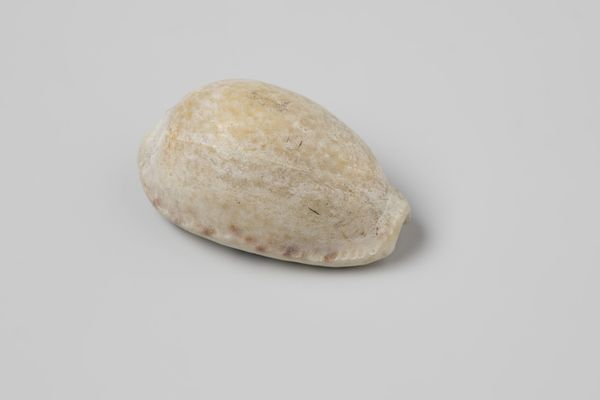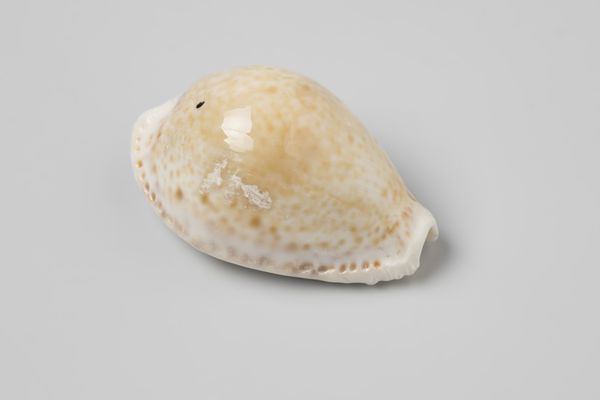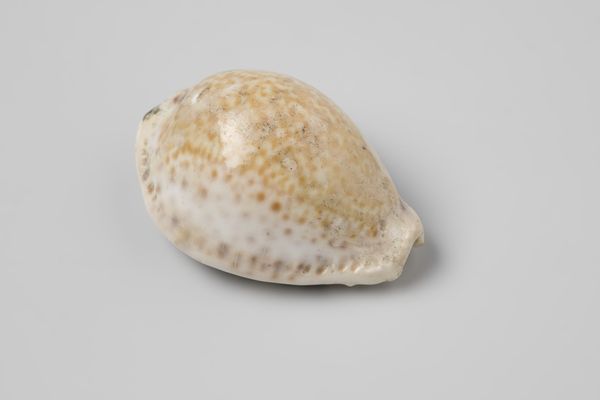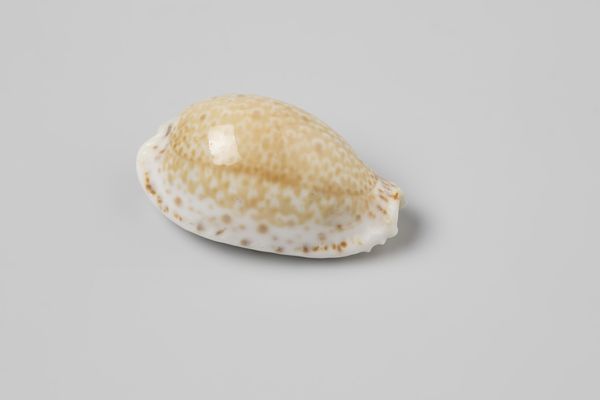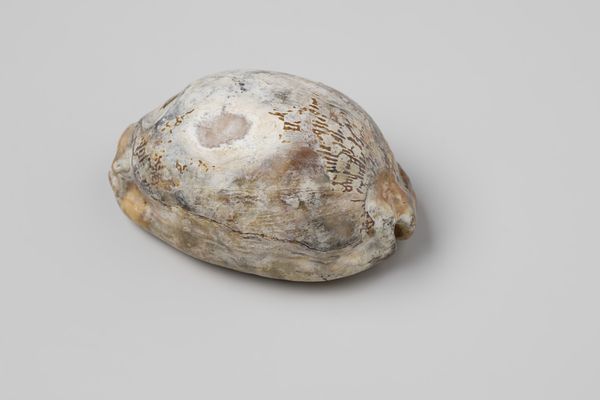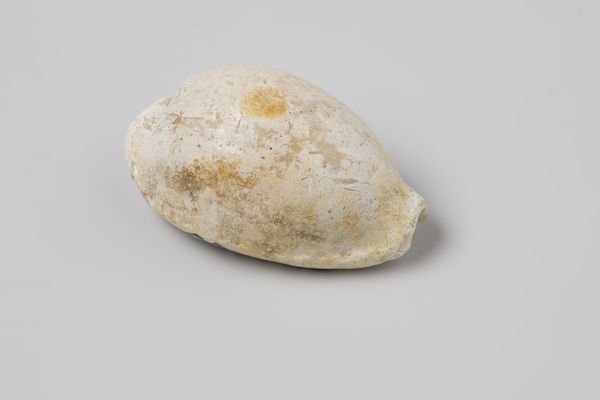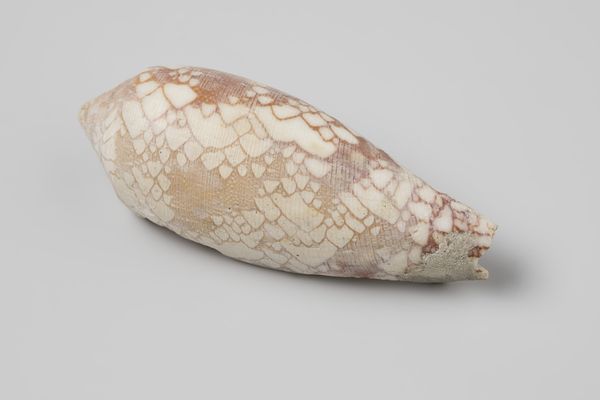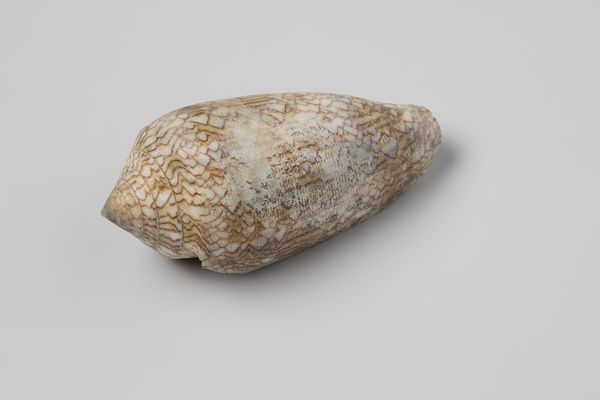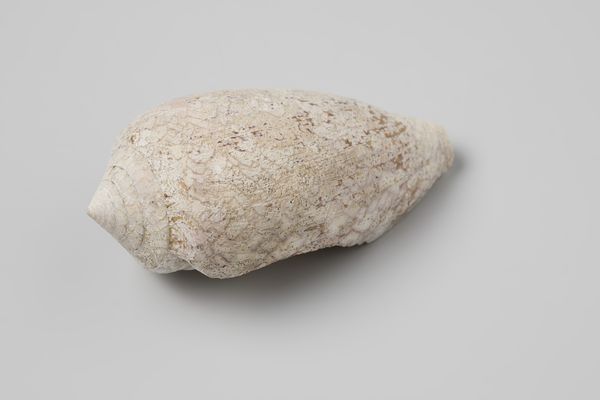
Erosaria spurca shell from the wreck of the Dutch East India ship Witte Leeuw before 1613
0:00
0:00
photography
#
still-life-photography
#
photography
#
orientalism
#
naturalism
Dimensions: width 2.5 cm, depth 1.6 cm, height 1.5 cm
Copyright: Rijks Museum: Open Domain
Curator: Before you, we have an image of an Erosaria spurca shell. Remarkably, it’s a shell recovered from the wreck of the Dutch East India ship, the Witte Leeuw, dating back to before 1613. Editor: It’s amazing how well-preserved it is, even photographed. You can see the subtle variations in texture and the muted palette – mostly creams and browns. There's a certain melancholy to it. Curator: That's interesting. Given its journey, the wreck, and its subsequent recovery, that melancholy might stem from its symbolic connection to global trade networks of the 17th century, Dutch colonialism, and the violence inherent in the acquisition of these "exotic" items. The shell becomes a material witness, bearing the weight of that history. Editor: Absolutely. Looking at its materiality – the shell itself – you can almost feel the ocean's force that shaped it, and then the slow, inevitable process of its submersion after the Witte Leeuw sank. The wear and tear speak volumes about labor and commodity exchange across vast distances, revealing inequalities ingrained into its transport and value. Curator: Precisely. And photographed this way, in what feels like an almost clinical, still-life manner, it abstracts it further. It allows us to isolate and analyze the implications embedded within it: the shell itself as both a natural object and an objectified piece of maritime history. Editor: There’s also the labor involved in finding, diving, and preserving. The social history that makes it something more than just a natural artifact on display, no? What lives were sacrificed to get us to the moment it was collected? Curator: Without a doubt. It encourages us to consider its significance not simply as a beautiful object but as a node within much larger intersectional histories. Editor: In the end, the photograph shows us an object lesson: linking the shell’s materiality to global and local histories. A visual reminder that we, the consumers and curators, need to consider ethical obligations within contemporary culture. Curator: Indeed, seeing this single shell really can uncover so much about trade and colonialism, and force an intersectional way of considering what may otherwise appear as a trivial, found thing.
Comments
No comments
Be the first to comment and join the conversation on the ultimate creative platform.
